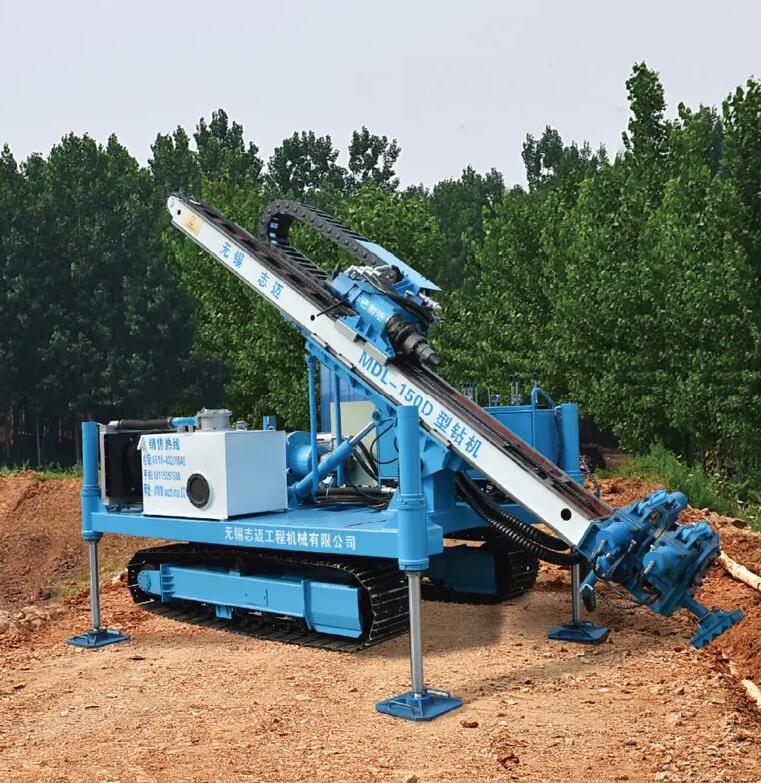 English
English שפה עברית
שפה עברית  Kurdî
Kurdî  Español
Español  Português
Português  русский
русский  tiếng Việt
tiếng Việt  ภาษาไทย
ภาษาไทย  Malay
Malay  Türkçe
Türkçe  العربية
العربية  فارسی
فارسی  Burmese
Burmese  Français
Français  日本語
日本語  Deutsch
Deutsch  Italiano
Italiano  Nederlands
Nederlands  Polski
Polski  한국어
한국어  Svenska
Svenska  magyar
magyar  বাংলা ভাষার
বাংলা ভাষার  Dansk
Dansk  Suomi
Suomi  हिन्दी
हिन्दी  Pilipino
Pilipino  Gaeilge
Gaeilge  Indonesia
Indonesia  Norsk
Norsk  تمل
تمل  český
český  ελληνικά
ελληνικά  український
український  Javanese
Javanese  தமிழ்
தமிழ்  తెలుగు
తెలుగు  नेपाली
नेपाली  български
български  ລາວ
ລາວ  Latine
Latine  Қазақша
Қазақша  Euskal
Euskal  Azərbaycan
Azərbaycan  Slovenský jazyk
Slovenský jazyk  Македонски
Македонски  Lietuvos
Lietuvos  Eesti Keel
Eesti Keel  Română
Română  Slovenski
Slovenski
What's the Difference Between Multi Functional Anchoring Drilling Rig and Percussive Drills?
2025-07-30
What's the Difference Between Multi Functional Anchoring Drilling Rig and Percussive Drills?
The Multi Functional Anchoring Drilling Rig is a new high-efficiency rock drilling equipment designed for water conservancy, transportation engineering, and construction sites. It is widely used in slope stabilization, hydraulic engineering, road construction, open-pit mining, and geophysical exploration for drilling anchor holes or blast holes in various rock formations.
This rig serves fundamental engineering construction by performing anchor rod installation, dry powder/grout construction, engineering survey holes, and micropile drilling. It supports both down-the-hole hammer and drag bit drilling methods. The fully hydraulic rotary jet grouting rig, with its hydraulic drive and power head design, is suitable for vertical/inclined drilling and specialized grouting techniques (fixed/swirling/rotary jet piles). It excels in high-pressure grouting within Quaternary deposits like soil, sand, and gravel.

The Multi Functional Anchoring Drilling Rig offers customized solutions for marine geotechnical surveys, rock/soil anchoring support, and complex stratum drilling—demonstrating unique advantages in niche applications.
In contrast, percussive drills adapt to diverse geological conditions and are vital for cast-in-place pile foundations. They outperform other drills in gravel strata by compacting surrounding soil during drilling, enhancing hole stability and pile bearing capacity.
Modern percussive drills (e.g., CZ series) feature trailer-mounted components and use crank-link mechanisms to convert rotary motion into reciprocating movement. A hammer crushes rocks via free-fall impact, with cuttings removed by slurry or bailers.
Key distinctions:
Multi Functional Anchoring Drilling Rig: Precision drilling for anchors/grouting; hydraulic efficiency; versatile in specialized engineering.
Percussive drills: Gravel-layer specialists; low efficiency (pulverizes rock); largely replaced in other strata due to high energy consumption and cross-bit limitations.




